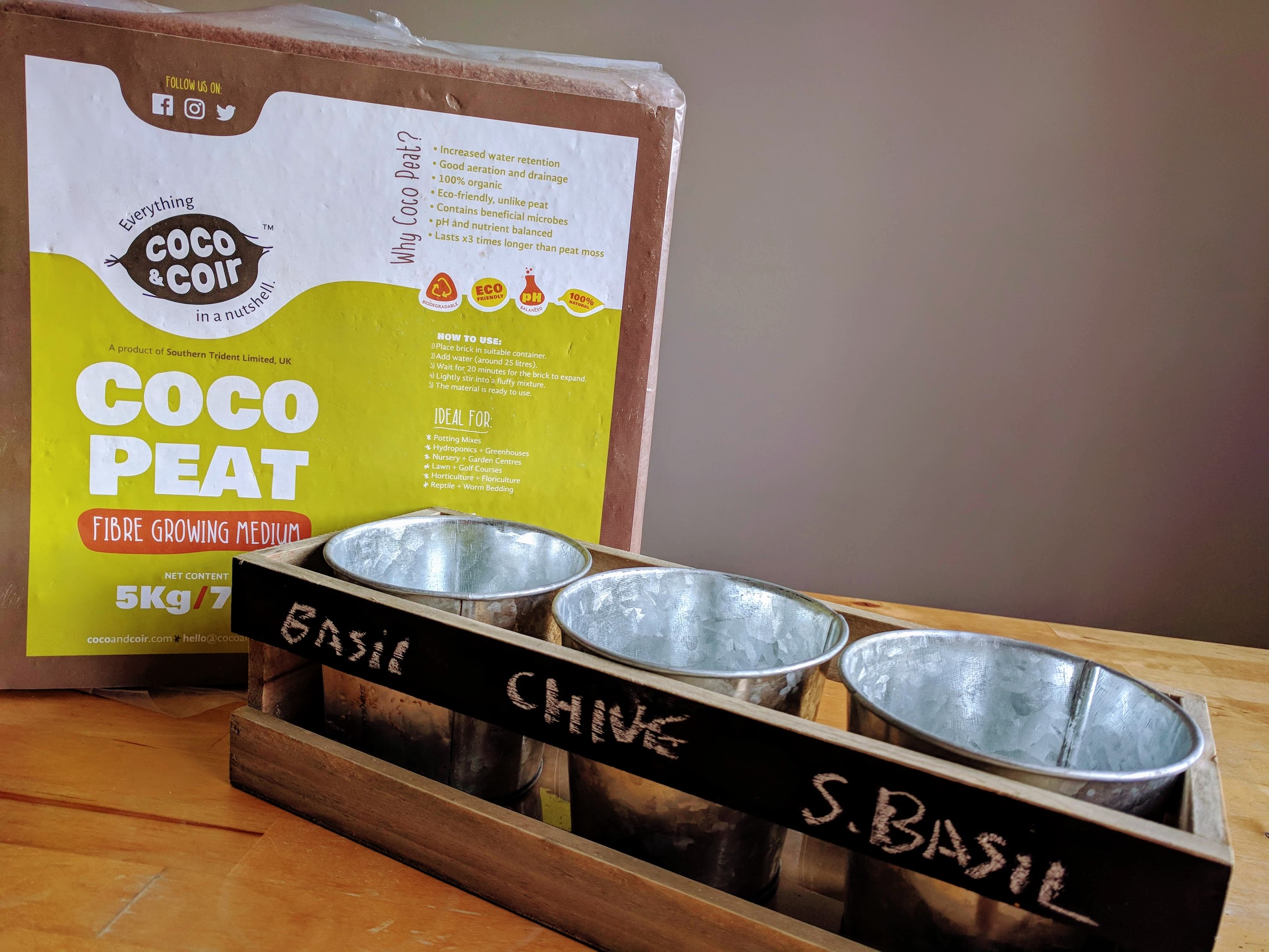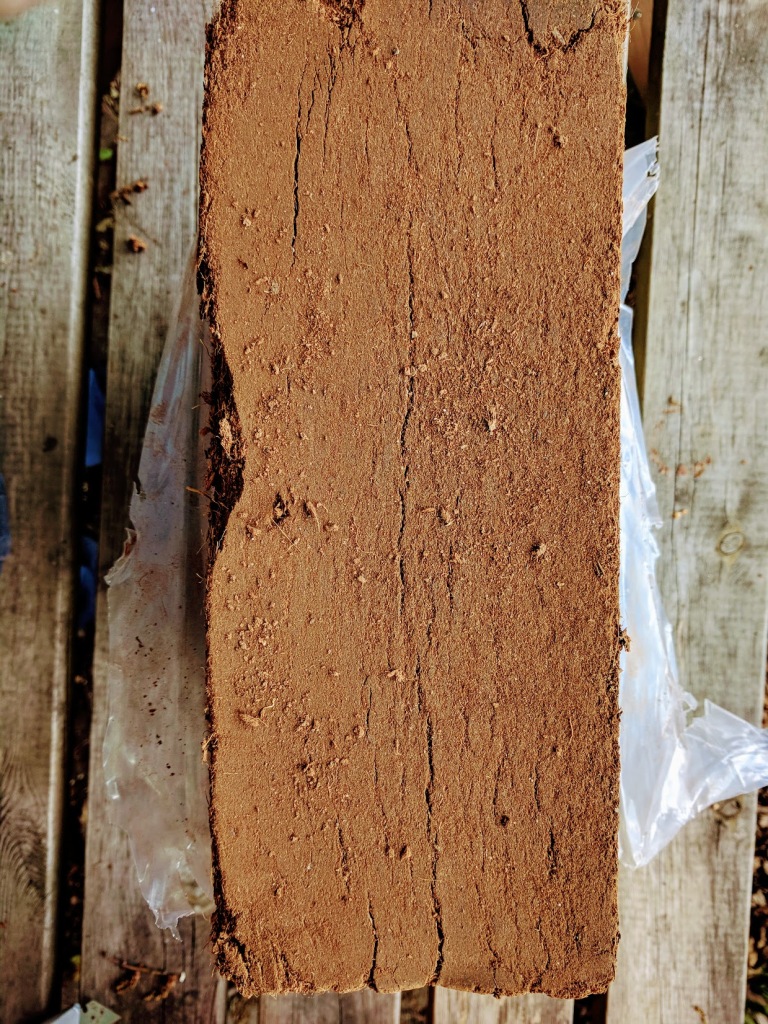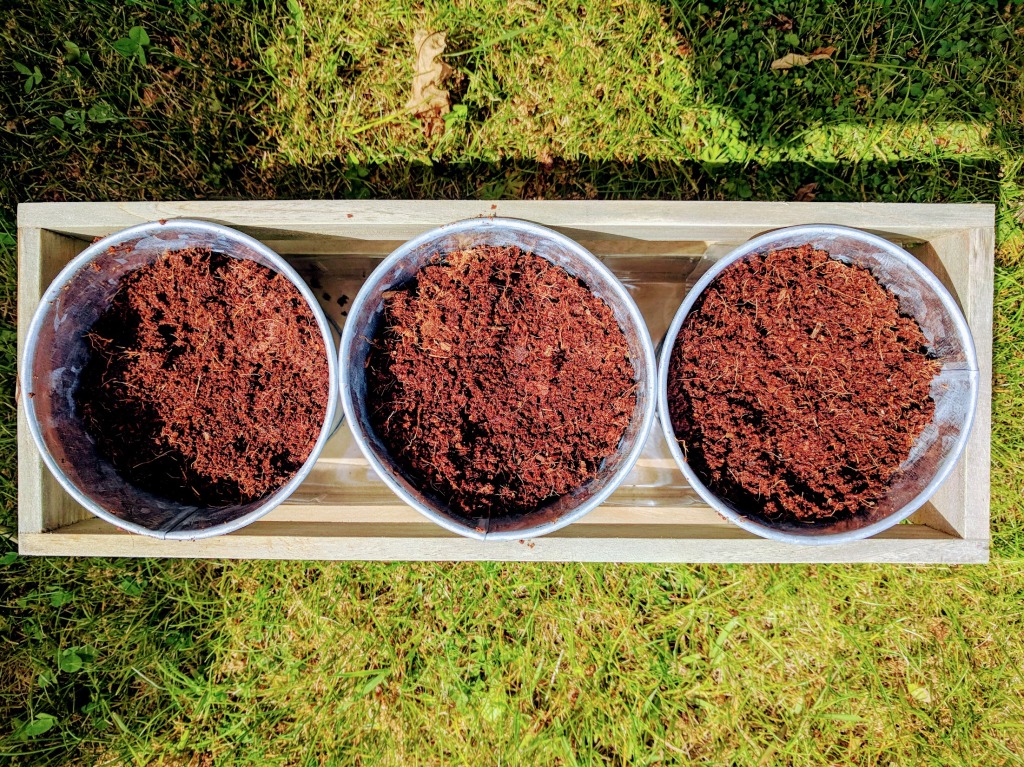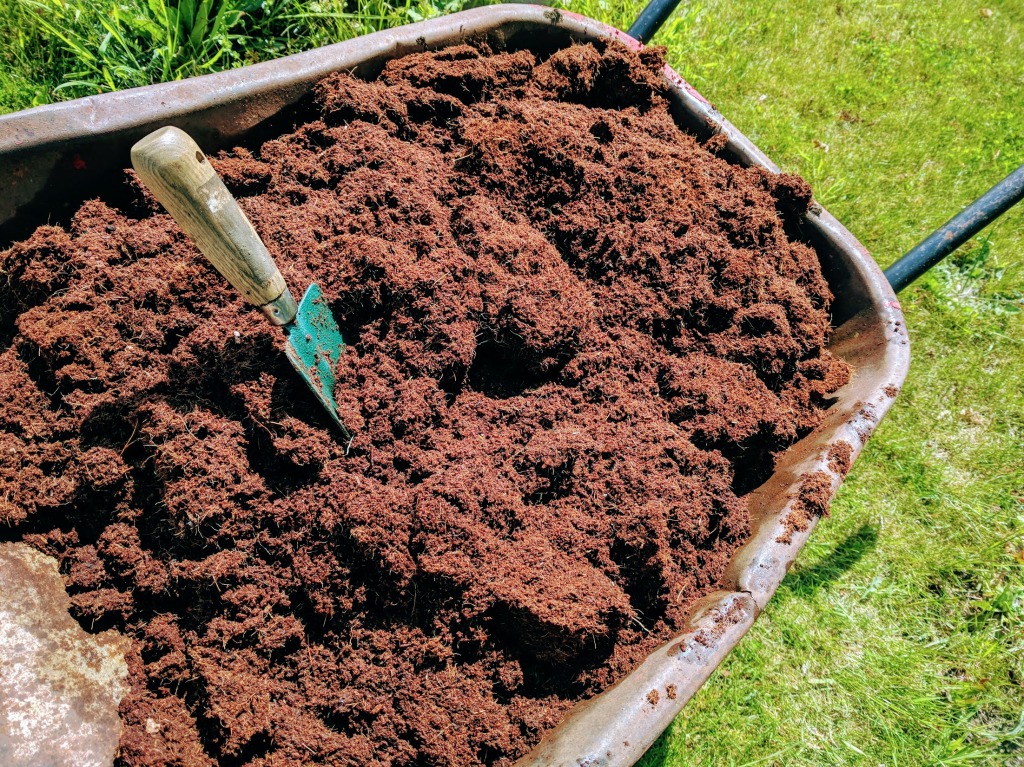When I got an an email from Coco and Coir peat compost to do product review I was absolutely thrilled. Not only is this my first ever product review, it’s also the first time I’ve used coconut peat.

I’ll be totally honest from the offset, my knowledge of garden centre compost, peat and peat derivatives went as far as going to the garden centre and buying a bag of compost – until now.
What is peat?
Peat, also known as turf, is an accumulation of partially decayed vegetation or organic matter. It is unique to natural areas called peatlands, bogs, mires, moors, or muskegs.
Peat – Wikipedia
There’s much debate over the usage of peat in gardening as it’s status as a ‘fossil fuel’ changes to a ‘slowly renewable fuel’.
Peat is used by gardeners because, like most fossil fuels, it’s cost to benefit ratio is highly advantageous. But as the old saying goes, if it’s too good be true – it probably is.
Peat extraction is basically robbing Peter to pay Paul when it comes to the environment, as the wetlands and bogs from where Peat comes from seldom recover after the production of peat. It can be quite destructive, like the use of most fossil fuels.
Suffice to say, the term “Peat free” has become a healthy promotional phrase seen on most garden centre shelves.
What is Coco & Coir
Coco & Coir produce peat that’s made from the husk of a coconut, after the fibres from the coconut shell have been removed. Dealing with coconut shells is quite a process – thankfully, this post here goes into much detail about how the the shells get turned into something that you can use in the garden.
Coco peat is considered sustainable because coconuts themselves are renewable and can be farmed in abundance.
With pH levels ranging closer to the neutral scale, rather than acidic like peat, you can in a manner of saying, plug and play. Simply plant your seeds and watch them grow, with no need to add lime.
Coco and Coir
Described as the most radical thing to hit horticulture in recent years – are we on the cusp of doing away with traditional peat manufacture, with a switch to a viable alternative? I hope so.
My experience with Coco & Coir
The 5kg batch of Coco & Coir landed on my doorstep as a solid square brick, that was actually pretty light to carry. I thought about what I could use it for and I decided that I could use this to make an indoor herb garden.

When I opened the top of the bag, I found that the block was pretty solid and there was no way I could sow seeds indoors without making a mess, so I migrated to the allotment.
I have never used peat compost (knowingly), let alone coco peat compost, so I didn’t really know what to expect. One thing was for sure, the block was hard and flat to the point where I found myself chipping away with a trowel like some kind of caveman.
The texture was that of thick layers of cardboard, and I thought to myself… “This can’t be right – I must be doing something wrong here…”
I was, it was only until I started adding to water to the chunks, that it started to transform into the compost you’d expect to get out of a bag.

“This was more like it…” I thought and it was really interesting to see the transformation – it was as if the compost decided to take on a life of its own as it started to expand in the wheelbarrow.

This is going to sound weird, but it’s the only compost I’ve used that actually moves on it’s own, when you add one or two watering cans worth of water. The way that Coco & Coir was able to maintain moisture stood out at this stage – it didn’t just dissolve and turn into slop like the usual multi-purpose compost I tend to go for.
The more water you add the more fascinating it is watching the batch expand. Within a few moments, I was able to handle and use the compost for the herb garden.
Looking back, I’m not sure if I would go to trouble of carving up the block, instead I would simply add water and let the block fall apart on it’s own.
I planted up some basil, parsley and sweet basil into a herb garden kit I was lucky enough to receive for Christmas, but it was still left with a whole wheelbarrow full.
So this was the second benefit of Coco & Coir – the 5kg bag, had suddenly turned into a wheelbarrow load.
Compost bags are sold in litres, which is a measure of volume. Whereas this is sold in kilograms, which is a measure of mass. I’m still trying to work out which is more beneficial – do I physically get more compost if I buy in litres or kilograms? Perhaps that’s an observation for another day.
It’s really difficult to gauge as I still ended up with a wheelbarrow load out of the 5kg batch of Coco & Coir and I was more than satisfied.
The texture was light, fluffy and moist so I decided to give the raspberries I planted earlier on in the year a little bit of TLC and mulched the top of the beds. I had enough to apply a decent covering on top of each of the beds.
The 5kg stretched further than expected and I was super impressed by this, and you can the difference it makes to the beds instantly.
Would I switch to coco peat?
For potting, seedlings and a bit of mulch – yes definitely.
A block of 5kg of coco peat will set you back £14.99 with discounts applied the more you buy, plus any promotions that might be happening at the time.
I live in a flat that’s around a 15 minute walk away from the allotment, the free delivery and the size of the package just makes the process purchasing compost a lot more convenient and to me, because of that, the price is justifiable.
Plus I now know that 5kg easily equates to a barrow full, which is ample for my needs when I need to purchase compost.
The headline benefits are:
- Sustainable and environmentally friendly
- Water retention is far better than the usual multi-purpose compost
- The 5kg bags are far easier to handle than the 70 litre bags
- The neutral character of the compost makes Coco & Coir a good all round resource for growing in.
- There’s something quite tropical about growing with coconut husks









Leave a Reply